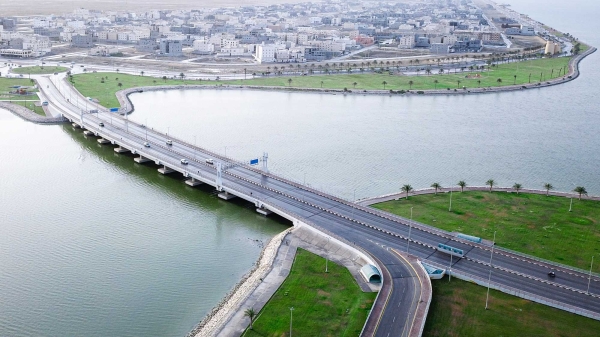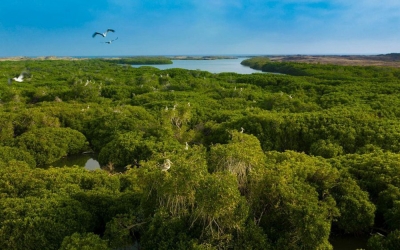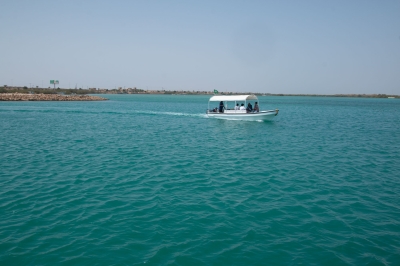

The Saudi Islands in the Arabian Gulf are a cluster of islands situated within the international maritime boundaries of the Kingdom of Saudi Arabia. The Kingdom borders the Arabian Gulf to the east, boasting two coastlines spanning approximately 1,200 km. These islands, totaling about 135 and comprising 11 percent of the Kingdom's island count, vary in origin and composition. Since the advent of oil discovery, they served as export ports, petroleum refineries, and sorting facilities.
The emergence of the Saudi islands in the Arabian Gulf
The shallow waters of the Arabian Gulf, coupled with certain natural phenomena such as tectonic shifts and sedimentation from ocean currents, have fostered the proliferation and dispersal of islands within its expanse. The density of islands is concentrated along its coastlines, notably in the southwest. Smaller islands are also scattered across the central and entrance regions of the Gulf.
Characteristics of the Saudi islands in the Arabian Gulf
The Saudi islands in the Arabian Gulf are characterized by their small size and flat surfaces compared to the Saudi islands in the Red Sea. Moreover, most of the islands are covered with sand, with small shrubs growing on them. Sand dunes also form on the edges of some, and sabkhas are scattered across others. Most of the Saudi islands in the Arabian Gulf are stations for migratory birds from north to south in winter, and from south to north in summer. They also represent settlements for some marine life such as turtles, including the islands of al-Jurayd, Kiran, Abu Ali, and Jana.
The largest Saudi island in the Arabian Gulf
Abu Ali Island, located in the northwest of al-Jubayl City in the Eastern Province, is the largest Saudi island in the Arabian Gulf in terms of area, with an estimated size of about 59.3 km². Its maximum length is 24.3 km. It is followed by Batinah Island, situated north of al-Jubayl City, which has an area of about 33.7 km² and a maximum length of about twelve km. Tarout Island, located to the east of al-Qatif Governorate, ranks third among the largest Saudi islands in the Arabian Gulf in terms of area, with its size being about 20.3 km² and its maximum length of approximately six km.
The importance of the Saudi islands in the Arabian Gulf
Previously, the islands in the Arabian Gulf did not hold significant economic or strategic importance due to their small size and lack of economic resources, in addition to their climatic conditions. Their importance emerged after the discovery of petroleum in the Gulf and its increasing significance as a vital and economic passage. Consequently, the countries bordering the Gulf started to show special interest in the islands located in the middle of the Gulf and near the straits, given their oversight of the navigational routes. As a result, the affiliation of most islands in the Arabian Gulf is now well established.
Some of the islands served as oil export ports, such as: Khark, Das, and Laffan. Some functioned as oil storage warehouses, such as: Sirri and Halul, while others hosted a range of petroleum infrastructure, including refineries and processing plants, including: Abu Ali and Sitra. Additionally, some artificial islands have been established in deep waters that are used as export ports, such as Ras Tanura, al-Bakr Port, and others.
Types of islands in the Arabian Gulf
The islands in the Arabian Gulf formed as a result of several factors. Some emerged due to tectonic shifts, while others formed as a result of coral formations. Still, other islands arose from sedimentation caused by ocean currents and winds. Moreover, there are islands that formed due to erosion factors carried out by water currents and waves, which separated them from the coastline.
Related quizzes
Related articles

